Gone are the days when the grill was a seasonal necessity, reserved only for outdoor gatherings and sunny afternoons. Today, the convenience and versatility of contact grills have made them a staple in modern kitchens across the Western world. As we delve into the dynamic world of contact grills, we uncover a market that’s not only thriving but also evolving at a rapid pace. This evolution is shaped by consumer preferences, technological advancements, and a competitive landscape that’s constantly shifting. Join us as we explore the intricate details of this bustling industry, from market dynamics to future predictions.
IntroductiontoContactGrills
Contact grills have become a staple in the modern kitchen, offering a convenient and efficient way to achieve that perfect sear on meats and vegetables. These compact cooking appliances have seen a surge in popularity, especially in Western countries where outdoor grilling is a cherished pastime. But what exactly are contact grills, and why have they captured the hearts and minds of so many home cooks?
At their core, contact grills are designed to cook food by pressing it between two heated plates. This method ensures even cooking and a distinctive grill mark, reminiscent of traditional outdoor grilling. Unlike open flame grills, contact grills provide a controlled cooking environment, reducing the risk of flare-ups and making them ideal for indoor use.
The concept of the contact grill dates back to the early 20th century, but it wasn’t until the late ‘70s and ‘80s that they began to gain traction in the consumer market. Initially, these grills were seen as a novelty, but their convenience and effectiveness quickly made them a must-have for anyone looking to enjoy the flavors of grilled food without the hassle of outdoor cooking.
One of the standout features of contact grills is their compact size. They are designed to fit on kitchen countertops or in small kitchenettes, making them a perfect solution for those with limited space. Their portability also means they can be easily stored away when not in use, ensuring that your kitchen remains clutter-free.
Modern contact grills come in a variety of shapes and sizes, catering to different cooking needs. Some models are designed for thin cuts of meat like steaks and chops, while others are better suited for sandwiches and burgers. The heating elements in these grills are typically made of cast iron or stainless steel, providing excellent heat retention and durability.
One of the key advantages of contact grills is their ability to cook food quickly and efficiently. The even distribution of heat ensures that food is cooked thoroughly without overcooking the outside while leaving the inside underdone. This is particularly beneficial for those who are short on time but still want to enjoy a delicious meal.
Another appealing aspect of contact grills is their versatility. They can be used to cook a wide range of foods, from meats and vegetables to sandwiches and even pancakes. The non-stick surfaces on many models make cleanup a breeze, further enhancing their appeal to busy cooks.
In recent years, there has been a growing trend towards healthier eating, and contact grills have been quick to adapt. Many newer models come with features like adjustable heat settings, allowing users to control the cooking temperature precisely. This not only ensures that food is cooked to perfection but also helps to retain more of the nutrients and natural flavors.
Moreover, the design of contact grills has evolved to cater to the aesthetic preferences of modern consumers. From sleek, stainless steel finishes to colorful and quirky designs, there’s a contact grill to suit every taste. Some models even include additional features like digital temperature controls, timers, and indicator lights, making them as user-friendly as they are functional.
While contact grills are popular for their convenience and versatility, they are not without their drawbacks. One common concern is the lack of a true “grill” flavor that comes from open flame cooking. However, many users find that the unique char and sear from a contact grill are a delightful alternative, especially when combined with marinades and seasonings.
In the Western world, contact grills have also become a favorite among health-conscious consumers. Their ability to cook food with minimal oil or butter makes them a great choice for those looking to reduce their fat intake. Additionally, the even cooking provided by contact grills helps to prevent the charring that can occur with traditional grilling methods, which is a known source of harmful compounds.
As the demand for contact grills continues to grow, manufacturers are responding with innovative new features and designs. From electric grills that can be used indoors or outdoors to induction contact grills that offer precise temperature control, the market is constantly evolving to meet the needs of consumers.
In conclusion, contact grills have come a long way since their inception. They have become a staple in many kitchens, offering a convenient, efficient, and healthy way to enjoy grilled food. With their compact size, versatility, and technological advancements, it’s no wonder that contact grills have captured the hearts of home cooks around the globe. Whether you’re a seasoned grill master or a novice looking to expand your culinary skills, a contact grill is a valuable addition to any kitchen.
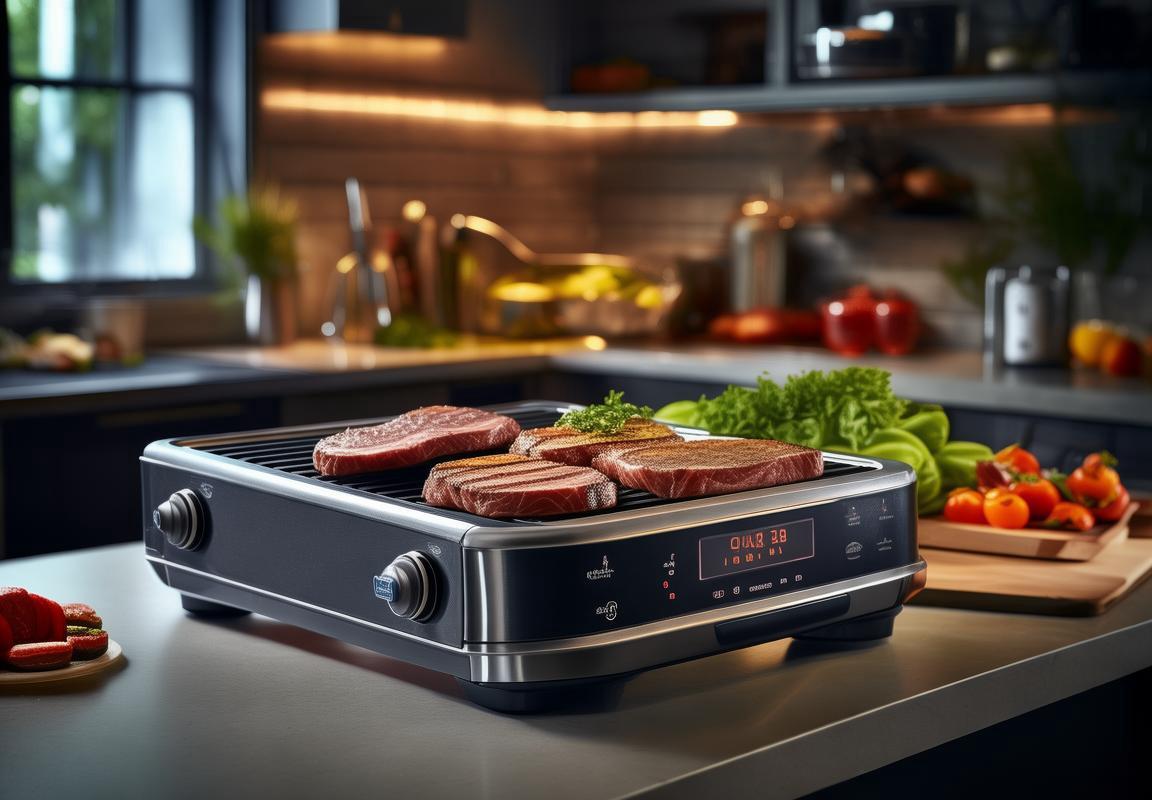
MarketOverviewinEurope
The European market for contact grills has seen a significant evolution over the years, reflecting changing consumer preferences and technological advancements. With a diverse range of products catering to various cooking styles and needs, the market has grown in both size and complexity.
In recent years, the European contact grill market has experienced a steady increase in demand. This surge can be attributed to several factors, including the growing popularity of healthy eating habits and the convenience that these appliances offer. Consumers are increasingly looking for cooking methods that reduce oil usage and preserve the natural flavors of food, making contact grills a preferred choice.
The market is characterized by a variety of brands, each offering unique features and designs. German brands like Tefal and Thermomix have a strong presence, while Italian companies like Lella Castelli have made a name for their high-quality, artisanal contact grills. The competition is fierce, with each manufacturer striving to differentiate their products through innovative features, such as adjustable heat settings, non-stick surfaces, and easy-to-clean designs.
Geographically, the market is split between Western and Eastern Europe. Western Europe, particularly countries like Germany, France, and the UK, account for a significant portion of the market. These regions are known for their preference for high-quality appliances and are more willing to invest in premium products. In contrast, Eastern Europe is experiencing a growing interest in contact grills, with a younger demographic leading the trend towards healthier cooking methods.
The European consumer is highly value-conscious, seeking products that not only meet their culinary needs but also align with their values. This has led to a rise in eco-friendly and sustainable contact grills, which are made from recycled materials and designed for longevity. The market also sees a trend towards multifunctionality, with contact grills often coming with additional features such as pizza ovens, grill plates, and even sear stations.
Another notable trend in the European contact grill market is the focus on health and safety. With concerns about foodborne illnesses on the rise, consumers are looking for cooking appliances that minimize the risk of contamination. Contact grills, with their even heating and direct contact cooking method, are seen as a safer alternative to traditional grilling methods that can lead to charring and the formation of harmful compounds.
Despite the positive growth trajectory, the European contact grill market is not without its challenges. The cost of these appliances can be prohibitive for some consumers, particularly in the wake of economic uncertainties. Additionally, the high competition and rapid technological advancements mean that manufacturers must continuously innovate to stay relevant.
In terms of distribution, contact grills are widely available through various channels, including kitchen specialty stores, department stores, and online retailers. The rise of e-commerce has significantly impacted the market, with more consumers turning to online platforms for their appliance purchases. This shift has also prompted manufacturers to invest in digital marketing and e-commerce strategies to reach a broader audience.
In conclusion, the European contact grill market is dynamic and growing, driven by consumer demand for healthier, convenient, and innovative cooking solutions. With a diverse range of products and a competitive landscape, the future of this market looks promising, as long as manufacturers continue to adapt to changing trends and consumer expectations.
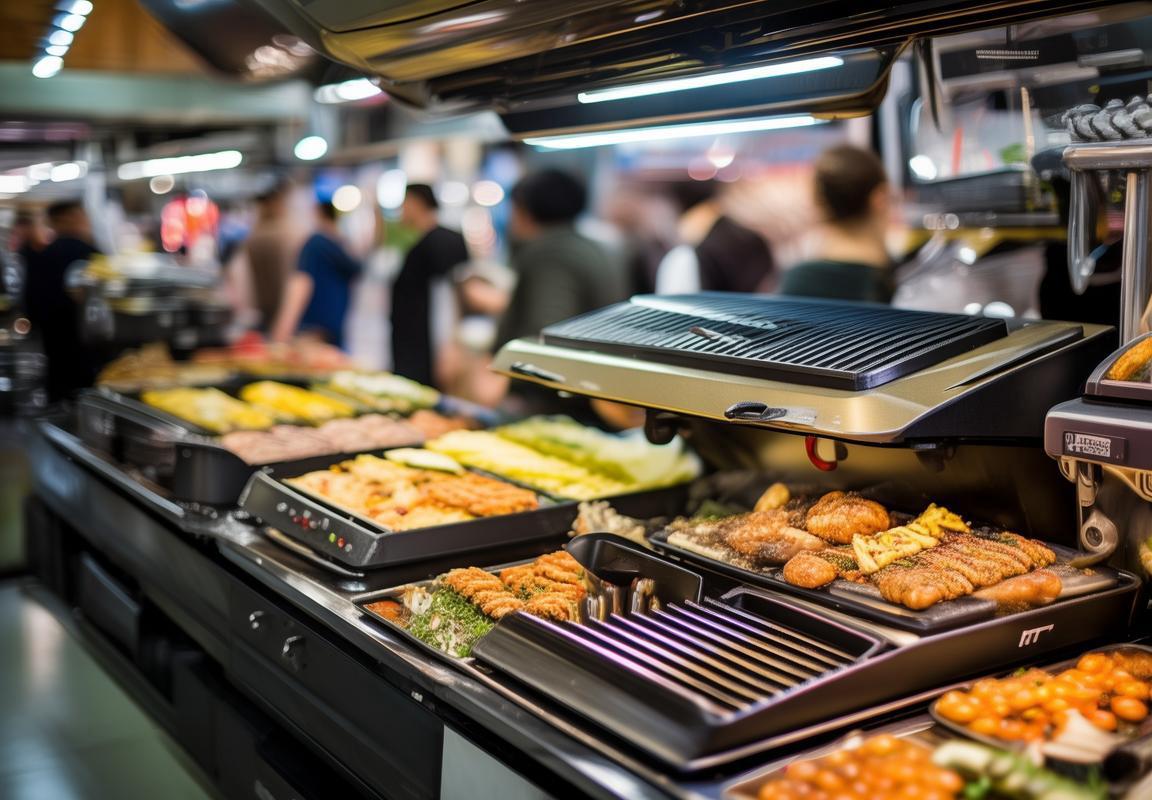
ConsumerPreferencesinEurope
In the heart of Europe, consumer preferences for contact grills are shaped by a blend of culinary trends, technological advancements, and cultural nuances. These preferences reflect a market that values convenience, health, and innovation.
European consumers are increasingly seeking appliances that not only simplify cooking but also enhance the quality of their meals. Contact grills, with their ability to cook food with minimal oil, have become a popular choice among health-conscious consumers. The demand for healthier cooking methods is driving the preference for contact grills, as they offer a way to enjoy grilled flavors without the excess fat often found in traditional grilling methods.
Design and functionality are also key factors influencing consumer choices. Modern contact grills come with features like adjustable heat settings, non-stick surfaces, and even digital controls that allow for precise temperature management. These features cater to the European consumer’s desire for high-quality, user-friendly appliances. The sleek and compact design of contact grills also appeals to those with limited kitchen space, making them a practical choice for urban dwellers and small households.
The preference for European-made products is strong, and this extends to kitchen appliances as well. Many consumers look for contact grills that are manufactured in Europe, valuing the craftsmanship and quality associated with European brands. This preference is often reflected in the higher price points of these products, but the perceived value is often worth the investment for European consumers.
Cultural diversity plays a significant role in shaping consumer preferences for contact grills in Europe. From the Mediterranean countries where fresh ingredients and outdoor cooking are central to the culinary experience, to the Scandinavian regions where simplicity and sustainability are paramount, contact grills offer a versatile solution that can cater to a wide range of tastes and cooking styles. The ability to grill a variety of foods, from meats and vegetables to cheeses and sandwiches, makes contact grills a versatile tool in the European kitchen.
Smart features are gaining traction among tech-savvy consumers. Contact grills with Bluetooth connectivity, which allow users to control the appliance remotely via an app, are becoming more popular. This integration with smart home technology reflects a broader trend towards connected kitchen appliances that offer convenience and efficiency.
Environmental consciousness is also influencing consumer preferences. As sustainability becomes a more pressing issue, European consumers are more likely to opt for appliances that are energy-efficient and have a lower carbon footprint. Contact grills that use less energy and can be easily recycled at the end of their life cycle are increasingly favored.
In terms of brand loyalty, European consumers tend to be brand-aware and value the reputation and history of a brand. They are often willing to pay a premium for a trusted brand that offers a reliable product with excellent customer service. This loyalty is a testament to the strong relationships that have been built between consumers and European appliance brands over the years.
Lastly, the rise of online shopping has had a significant impact on the contact grill market in Europe. Consumers are turning to e-commerce platforms for the convenience of browsing and purchasing a wide range of products from the comfort of their homes. Online reviews and ratings are crucial in influencing purchasing decisions, as consumers seek the opinions of others who have already tried the product.
In summary, European consumers of contact grills are driven by a desire for health, convenience, and innovation. They value quality, versatility, and the ability to connect with technology. As the market continues to evolve, these preferences will likely shape the future of contact grill design and functionality.
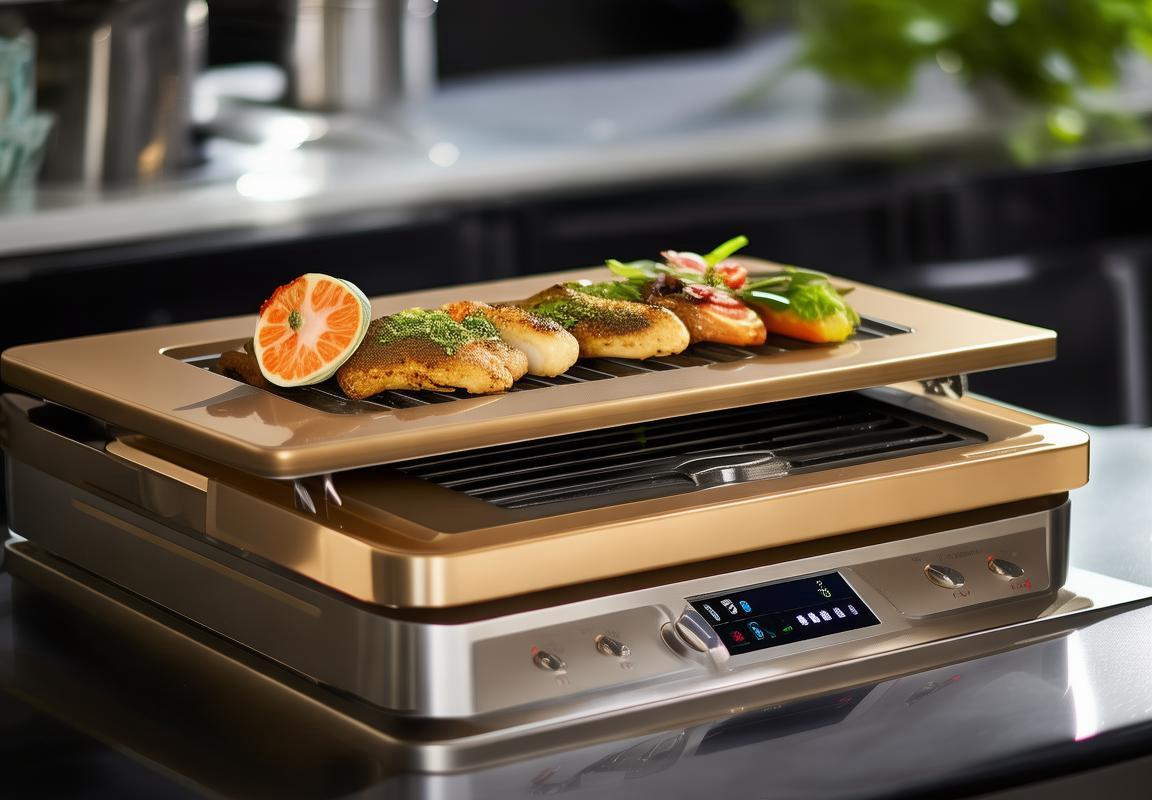
MarketDynamicsintheUnitedStates
In the United States, the market dynamics for contact grills have been shaped by a blend of cultural trends, technological advancements, and shifting consumer preferences. Here’s an exploration of these dynamics:
The Rise of Health-Conscious CookingConsumers in the U.S. are increasingly focusing on health and wellness, leading to a surge in demand for kitchen appliances that support healthier cooking methods. Contact grills, with their ability to cook food with minimal oil, have become a popular choice for those looking to reduce their fat intake.
Versatility in Cooking TechniquesAmerican consumers value versatility in their kitchen appliances. Contact grills offer a variety of cooking techniques, from searing steaks to toasting sandwiches, making them a multipurpose tool in the kitchen. This versatility has contributed to their popularity among those who enjoy experimenting with different recipes.
The Influence of Outdoor Grilling CultureAlthough contact grills are designed for indoor use, they have found a niche within the outdoor grilling culture in the U.S. Many consumers use them during the off-season or in inclement weather when traditional outdoor grilling is not an option. This adaptability has helped maintain their relevance year-round.
The Role of Online Reviews and InfluencersIn the U.S., the impact of online reviews and social media influencers on consumer purchasing decisions is significant. Positive reviews and endorsements from popular chefs and cooking enthusiasts can quickly boost the sales of contact grills, reflecting the trust placed in these platforms by consumers.
Innovation in Design and FunctionalityManufacturers in the U.S. have been focusing on innovation, introducing contact grills with advanced features such as adjustable heat settings, non-stick surfaces, and built-in timers. These features not only enhance the cooking experience but also cater to the specific needs of various types of food preparation.
Seasonal Demand and Sales PromotionsSeasonal demand plays a crucial role in the contact grill market. Sales typically increase during the summer months, aligning with the peak grilling season. Retailers often use this period to launch sales promotions and discounts, making it more appealing for consumers to purchase contact grills.
Competitive Landscape and Brand LoyaltyThe U.S. contact grill market is highly competitive, with numerous brands vying for consumer attention. Brand loyalty is often based on factors such as durability, performance, and customer service. Established brands that have built a reputation for quality and reliability tend to retain a loyal customer base.
The Impact of Smart Kitchen AppliancesAs the smart kitchen appliance market grows, contact grills are beginning to integrate smart features. Consumers who appreciate the convenience of smart technology are likely to be drawn to contact grills that can be controlled via smartphone apps, providing them with added control and convenience.
Price Sensitivity and Budget-Friendly OptionsPrice sensitivity remains a factor in the U.S. market. While premium contact grills with advanced features may command a higher price, there is also a significant segment of consumers looking for budget-friendly options. Manufacturers that offer quality at a reasonable price often capture a larger market share.
In conclusion, the market dynamics for contact grills in the United States are driven by a combination of health consciousness, cultural preferences, technological innovation, and consumer behavior. Understanding these dynamics is key for manufacturers and retailers looking to capitalize on this growing market segment.
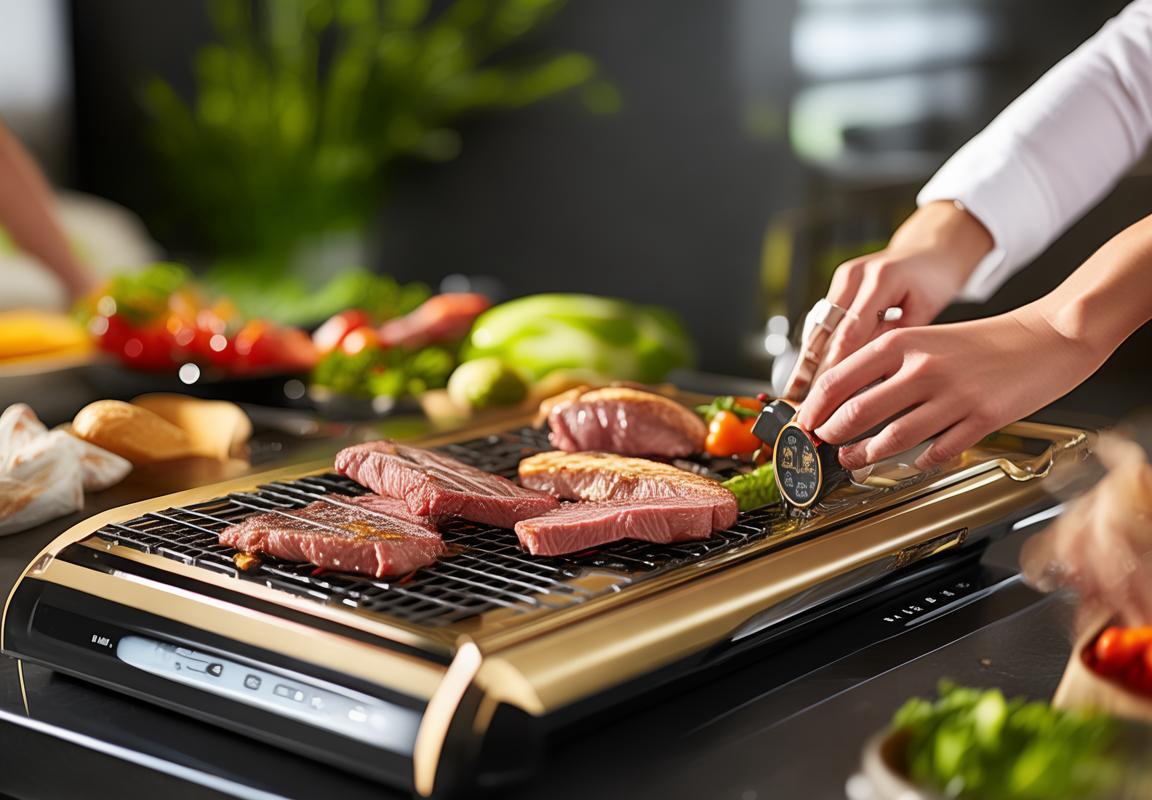
ConsumerTrendsintheU.S
In the United States, consumer trends in the kitchen appliances sector, particularly within the realm of contact grills, reflect a blend of convenience, health consciousness, and technological innovation. Here’s an in-depth look at some of the key trends shaping this market.
-
Health and Wellness FocusConsumers in the U.S. are increasingly health-conscious, and this is evident in the way they approach cooking. Contact grills, with their ability to cook food with less oil, have gained popularity as a healthier alternative to traditional grilling methods. The trend towards low-fat and low-calorie cooking has propelled the demand for contact grills.
-
Convenience and EfficiencyThe fast-paced lifestyle of many Americans means that convenience is a top priority. Contact grills offer a quick and efficient way to cook, perfect for busy individuals who want to enjoy a homemade meal without spending too much time in the kitchen. The ease of use and speed of cooking have made them a favorite among time-strapped consumers.
-
Versatility in Cooking OptionsModern contact grills come with a variety of features that cater to diverse cooking preferences. The ability to grill, sear, and even bake on a contact grill appeals to consumers who seek versatility. The convenience of being able to cook a variety of dishes on a single appliance is a significant factor in the popularity of contact grills.
-
Smart Technology IntegrationAs technology advances, so does its integration into kitchen appliances. In the U.S., consumers are embracing smart kitchen gadgets that can be controlled remotely, such as contact grills with built-in Wi-Fi capabilities. These smart grills allow users to monitor and control their cooking process from their smartphones, adding a layer of convenience and precision.
-
Eco-Friendly and Sustainable CookingWith growing environmental concerns, there’s a trend towards eco-friendly kitchen appliances. Contact grills that are energy-efficient and made from sustainable materials are becoming more appealing to environmentally conscious consumers. The market is seeing an increase in demand for appliances that align with green living principles.
-
Customization and PersonalizationConsumers today are looking for products that can be tailored to their specific needs and preferences. Customizable contact grills with adjustable heat settings and various cooking plates cater to this desire for personalization. The ability to create unique recipes and cooking experiences at home is a significant draw for many U.S. consumers.
-
Social Media InfluenceSocial media has a profound impact on consumer trends, and the kitchen appliance market is no exception. Influencers and home cooks share their cooking experiences and appliance reviews online, which can significantly influence purchasing decisions. The popularity of contact grills has been bolstered by positive reviews and cooking demonstrations on platforms like Instagram and YouTube.
-
Outdoor Cooking and EntertainingThe U.S. has a strong tradition of outdoor cooking and entertaining. Contact grills are often used for outdoor gatherings, providing a convenient way to cook for a crowd. The portability and ease of setting up a contact grill in a backyard or at a picnic site make them a popular choice for social events.
-
Price SensitivityDespite the growing sophistication of kitchen appliances, price remains a crucial factor for many U.S. consumers. The market has seen the emergence of more affordable contact grills that offer the essential features without the premium price tag. This has made contact grills accessible to a broader audience.
-
Sustainability of MaterialsThe use of durable and sustainable materials in contact grill construction is also gaining traction. Consumers are looking for appliances that not only perform well but also last long and have a minimal environmental footprint. This focus on longevity and sustainability is shaping the market dynamics for contact grills in the U.S.
The trends in the U.S. contact grill market are a testament to the evolving preferences and demands of consumers. As these trends continue to shape the industry, manufacturers are likely to innovate further to meet the needs of a health-conscious, tech-savvy, and environmentally aware consumer base.
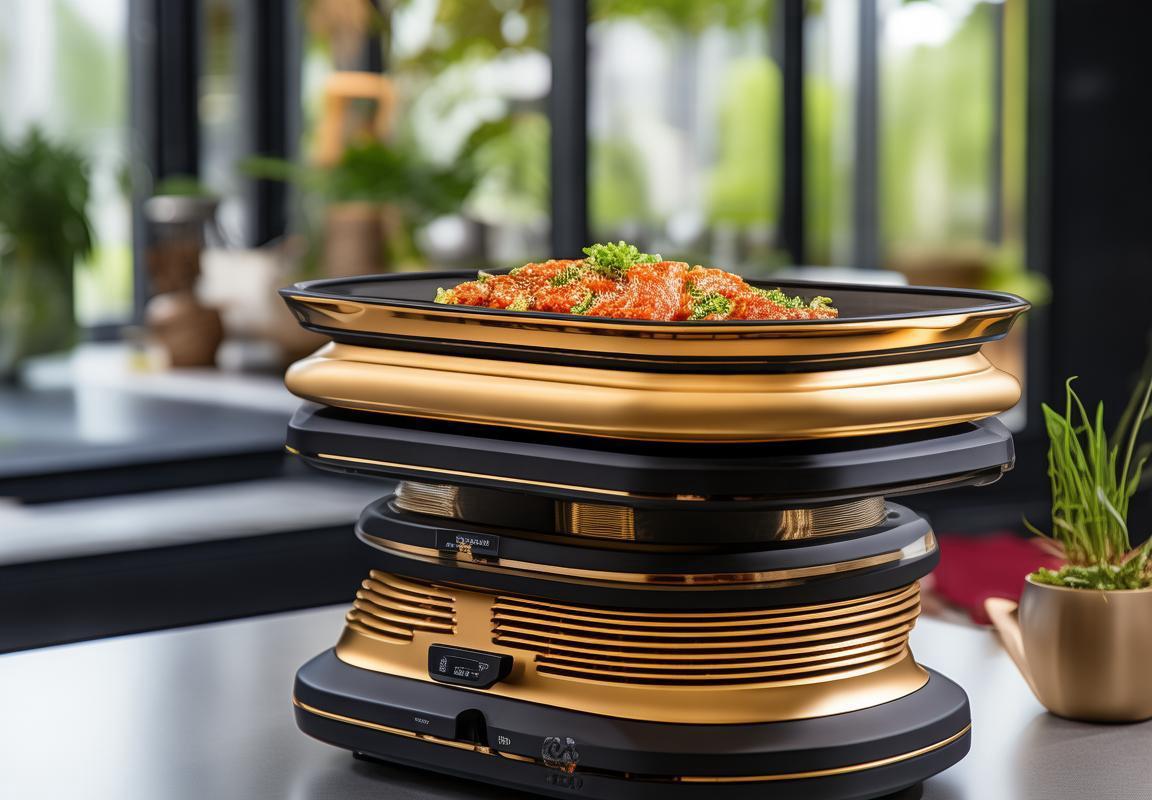
TechnologicalAdvancements
In the realm of kitchen appliances, technological advancements have revolutionized the way we cook, and contact grills are no exception. These innovations have not only improved the functionality and convenience of these appliances but have also enhanced the overall cooking experience. Here’s a glimpse into some of the key technological advancements that have shaped the contact grill market:
The evolution of heating elements has been a cornerstone of contact grill technology. Early models relied on simple, flat heating plates, but modern contact grills now feature advanced heating elements that provide more even heat distribution. This even heating ensures that food is cooked uniformly, reducing the likelihood of hot spots and cold areas.
One of the latest trends in contact grill technology is the integration of smart features. Many modern grills come equipped with digital controls that allow users to precisely set the cooking temperature and time. Some models even offer programmable settings, making it possible to cook a variety of foods with ease. This level of control has become increasingly popular among consumers who value convenience and consistency in their cooking results.
The design of contact grills has also seen significant improvements. Modern units often feature non-stick surfaces that are easier to clean and maintain. These surfaces are not only more durable but also reduce the need for excessive oil or butter, which aligns with the growing trend towards healthier cooking methods. The sleeker designs of these grills also make them more aesthetically pleasing and suitable for a wider range of kitchen styles.
Safety features have become a major focus in the development of contact grills. Many newer models include safety locks to prevent accidental operation, especially important for households with children. Some grills are also equipped with cool-touch handles and surfaces, reducing the risk of burns. These features are not only beneficial for users but also contribute to the overall appeal of contact grills.
The ability to cook a variety of foods is a key factor in the popularity of contact grills. Technological advancements have allowed for the inclusion of multiple cooking plates, which can be swapped out depending on the type of food being prepared. For example, a flat plate is ideal for steaks and burgers, while a ridged plate is better suited for vegetables and seafood. This versatility has expanded the appeal of contact grills beyond traditional grilling enthusiasts.
Another significant technological development is the inclusion of built-in thermometers. These devices provide real-time temperature readings, ensuring that food is cooked to the perfect level of doneness. Some models even offer temperature alerts, which notify the user when the grill has reached the desired cooking temperature, making it easier to achieve professional-grade results at home.
In recent years, there has been a surge in eco-friendly technologies within the contact grill market. Many manufacturers are now focusing on energy efficiency, with some models using up to 30% less energy compared to older models. This not only helps reduce utility bills but also contributes to a more sustainable approach to cooking.
The integration of wireless connectivity is another area where contact grills are advancing. Some models can now be controlled via smartphones or tablets, allowing users to adjust settings and monitor cooking progress remotely. This feature is particularly appealing to busy individuals who want to ensure their food is being cooked to perfection without being present at all times.
Finally, the rise of smart kitchen technology has led to the development of contact grills that can be integrated into larger smart kitchen ecosystems. These grills can communicate with other appliances and devices, providing users with a seamless and interconnected cooking experience.
These technological advancements have significantly boosted the appeal of contact grills, making them more user-friendly, efficient, and versatile. As these innovations continue to evolve, it’s likely that contact grills will become an even more integral part of the modern kitchen, offering a wide array of benefits to both casual and seasoned cooks alike.
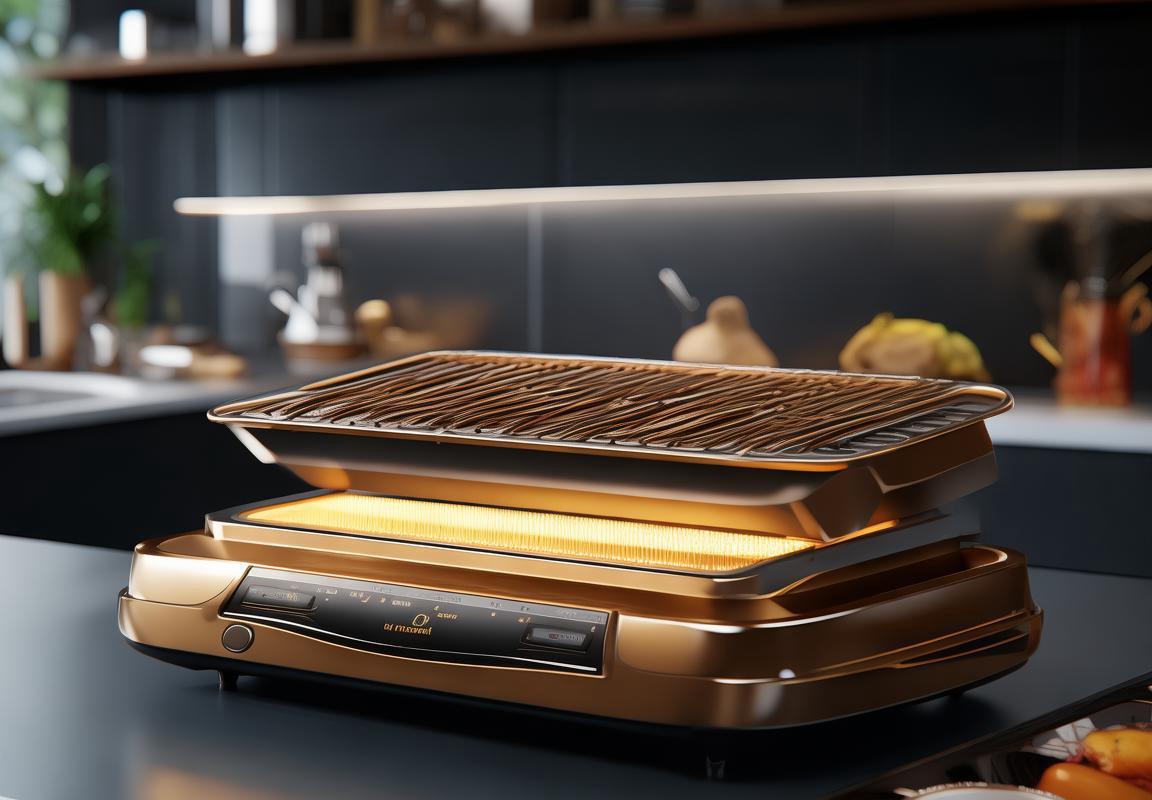
DistributionChannels
The landscape of distribution channels in the kitchen appliance industry, particularly for contact grills, has evolved significantly. Here’s a detailed look at how these channels are shaping the market:
-
Traditional Retail StoresRetail stores continue to be a cornerstone for contact grill sales. Customers appreciate the ability to see, touch, and even test the product before purchasing. Large home goods stores, department stores, and specialty kitchen appliance shops often carry a variety of contact grill models, catering to different budgets and needs.
-
Online MarketplacesThe rise of e-commerce has dramatically changed the distribution landscape. Online marketplaces like Amazon, eBay, and Wayfair have become go-to destinations for consumers looking for convenience and competitive pricing. These platforms offer a vast selection, easy returns, and often free shipping, making them increasingly popular.
-
Manufacturer WebsitesMany contact grill manufacturers have established their own e-commerce platforms, allowing them to directly reach customers. These websites often provide detailed product information, customer reviews, and the opportunity to order directly from the source. This direct channel can enhance brand loyalty and customer satisfaction.
-
Specialized Appliance RetailersSpecialized retailers that focus solely on kitchen appliances have seen a surge in popularity. These stores offer a wealth of knowledge about the products they sell, with knowledgeable staff who can guide customers through the decision-making process. They often carry the latest models and offer excellent customer service.
-
Home Improvement StoresHome improvement stores like Lowe’s and Home Depot have expanded their kitchen appliance offerings to include contact grills. These stores provide not only the appliances but also the necessary installation services, making them a one-stop shop for home renovation projects.
-
Warehouse Clubs and Membership StoresWarehouse clubs like Costco and Sam’s Club have become a staple for many consumers seeking bulk purchases. They often offer contact grills at discounted prices, which appeals to families and those looking to stock up on kitchen essentials. The membership model also provides an incentive for repeat business.
-
Independent Local StoresDespite the dominance of large retailers and online marketplaces, independent local stores still play a crucial role. These businesses often have a strong community presence and offer personalized service that cannot be replicated online. They may also stock niche or hard-to-find contact grill models.
-
Social Media and Influencer MarketingSocial media has opened new avenues for distribution. Brands are using platforms like Instagram, Facebook, and YouTube to showcase their products and engage with potential customers. Influencers often collaborate with brands to promote contact grills, leveraging their followers’ trust and interest.
-
Direct-to-Consumer (DTC) SalesSome manufacturers are opting for a direct-to-consumer sales model, bypassing traditional retail channels. This approach allows them to have full control over the customer experience and can lead to higher profit margins. DTC sales also provide valuable customer data that can be used for targeted marketing and product development.
-
Collaborations with Online Cooking CommunitiesBrands are increasingly partnering with online cooking communities and forums to distribute their contact grills. By engaging with these communities, they can tap into a pool of enthusiasts who are eager to try new kitchen gadgets. This method also fosters brand loyalty and word-of-mouth referrals.
-
International DistributionFor companies looking to expand beyond domestic markets, distribution channels must be carefully considered. This involves navigating different regulations, cultural preferences, and logistical challenges. International distribution can include partnerships with local retailers, online marketplaces, and even setting up regional offices.
-
The Rise of Subscription ModelsSome contact grill manufacturers are experimenting with subscription models, where customers pay a monthly fee to receive a new grill or accessories. This approach provides a steady revenue stream and can be a way to introduce new features or models to the market.
In summary, the distribution channels for contact grills are diverse and continue to adapt to consumer preferences and market dynamics. From traditional brick-and-mortar stores to online marketplaces and direct-to-consumer sales, the industry is well-positioned to meet the evolving needs of today’s consumers.

CompetitiveLandscape
In the world of kitchen appliances, the competitive landscape is as diverse as it is dynamic. Brands vie for market share, innovation, and customer loyalty. Here’s a glimpse into the competitive world of kitchen appliances, focusing on contact grills:
-
The presence of established players: Major appliance manufacturers like GE, KitchenAid, and Breville have a significant presence in the contact grill market. They bring a wealth of experience in design and durability to the table.
-
The rise of specialty brands: There’s a growing trend of specialty brands that focus solely on kitchen appliances. Companies like Hamilton Beach and Cuisinart have carved out niches for themselves, offering a range of contact grills that cater to specific consumer needs and preferences.
-
Online marketplaces’ impact: The rise of e-commerce platforms has allowed newer, smaller brands to gain traction. These companies often leverage social media and targeted marketing to appeal to a tech-savvy consumer base.
-
The influence of celebrity chefs: Chefs like Gordon Ramsay and Rachel Ray have endorsed certain brands, which has helped in building a brand reputation and trust among consumers.
-
Innovation through design: Brands are constantly innovating in terms of design and functionality. From sleeker, more compact models to those with advanced features like digital temperature control, design is a key competitive differentiator.
-
The importance of branding: Strong branding is crucial in the appliance market. Brands that tell a compelling story about their products, their heritage, and their commitment to quality tend to stand out in the crowded market.
-
The role of distribution: The way appliances are distributed can significantly impact their market presence. Some brands opt for a direct-to-consumer model, while others rely on partnerships with large retailers like Home Depot and Lowe’s.
-
The global perspective: While the U.S. market is vast, it’s important to note that the competitive landscape is global. Brands that excel in one region often look to expand their reach internationally, leading to a diverse range of competitors.
-
The impact of technology: As technology advances, so does the competitive nature of the market. Smart appliances that can be controlled via smartphone apps, for instance, are becoming more common, adding a new layer to the competitive landscape.
-
The consumer focus: Ultimately, the competitive landscape is shaped by consumer demand and behavior. Brands that listen to their customers and adapt to their changing needs are better positioned to succeed.
-
The importance of service: Beyond the product itself, the level of customer service offered by a brand can be a major competitive advantage. Brands that provide excellent post-purchase support and quick response to customer queries tend to build a loyal customer base.
-
The sustainability factor: With growing environmental concerns, brands that focus on sustainability and eco-friendly practices are gaining attention. This includes using recycled materials, energy-efficient designs, and responsible manufacturing processes.
-
The future of competition: As the market evolves, the competitive landscape is expected to become even more diverse. New technologies, changing consumer habits, and global market dynamics will continue to shape how brands compete in the kitchen appliance industry.
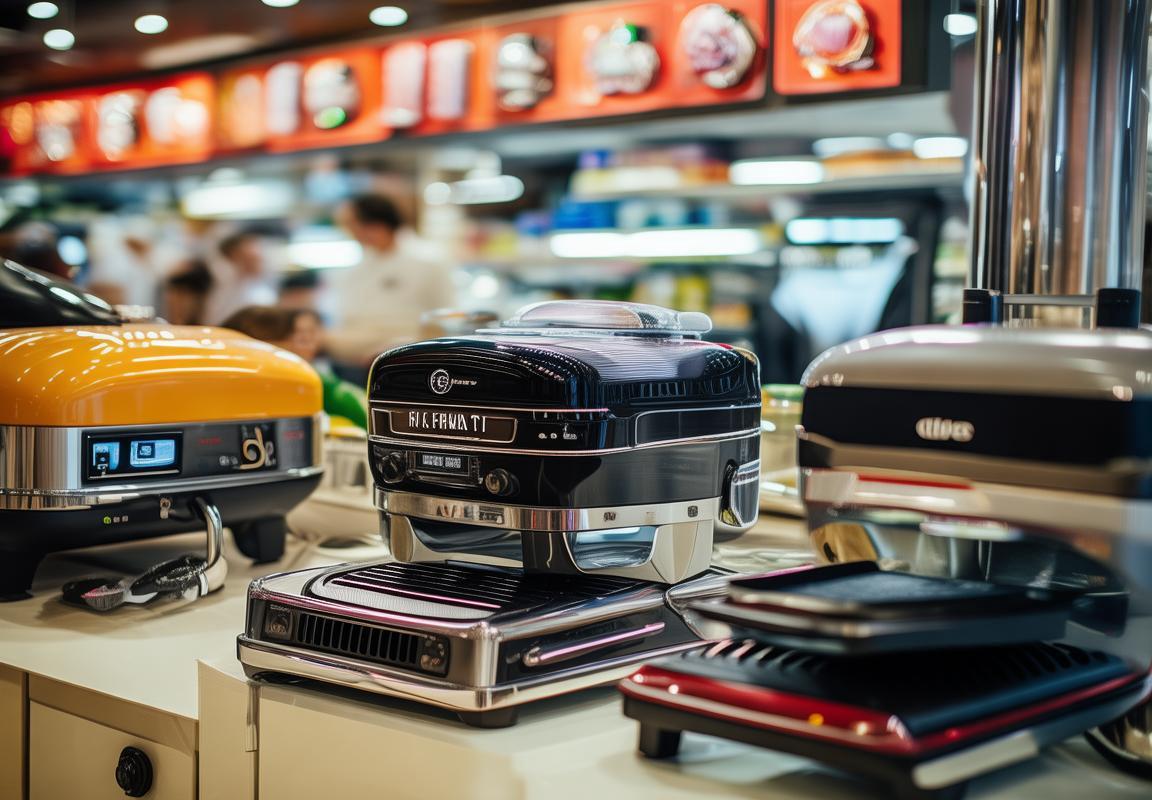
ChallengesandOpportunities
The consumer landscape in the United States when it comes to kitchen appliances, particularly contact grills, is marked by a blend of trends that reflect the nation’s diverse culinary preferences, technological advancements, and the desire for convenience and health-conscious living. Here’s a detailed look into the consumer trends shaping the market:
Sustainability and Eco-Friendly ChoicesConsumers are increasingly seeking products that align with their environmental values. This extends to kitchen appliances, including contact grills, where the demand for energy-efficient and sustainable models is on the rise. Brands that offer eco-friendly materials or energy-saving features are likely to gain a competitive edge.
Health and Wellness FocusThe health-conscious consumer trend continues to influence the market. Contact grills, with their ability to cook food with minimal oil, are seen as a healthier alternative to traditional grilling methods. Consumers are gravitating towards appliances that offer healthier cooking options, such as non-stick surfaces and adjustable heat settings.
Technology IntegrationSmart kitchen appliances have become a norm, and contact grills are no exception. Consumers are drawn to models that offer connectivity to smartphones or smart home systems, allowing for remote control, monitoring, and even personalized cooking programs. Technology integration also includes features like temperature control and automatic shut-off, which enhance safety and convenience.
Ease of Use and CleaningIn the fast-paced lifestyle of many Americans, ease of use and quick cleanup are crucial. Contact grills that are easy to assemble, operate, and clean are highly favored. Features like removable parts for easy washing and non-stick surfaces that reduce the need for scrubbing are becoming more attractive to consumers.
Brand Loyalty and ReputationBrand reputation and loyalty play a significant role in the consumer market. Consumers often prefer established brands that they trust, especially when it comes to appliances that require a significant investment. Word-of-mouth recommendations and positive reviews online can greatly influence purchasing decisions.
Culinary Variety and ExperimentationAmerican consumers are known for their love of culinary experimentation. Contact grills that offer versatility in terms of cooking methods, such as flipping the grill surface or adjusting the cooking time, are appealing. Brands that can cater to a wide range of cooking styles and recipes are more likely to attract a broader consumer base.
Price SensitivityWhile health and quality are important, price remains a significant factor for many consumers. There is a growing segment of price-conscious buyers who seek value for their money. This has led to the rise of budget-friendly contact grill models that offer essential features without compromising on performance.
Demographic ShiftsDemographic changes, such as the aging population and the rise of single-parent households, are influencing consumer preferences. Appliances that are user-friendly for older adults or those with physical limitations, as well as those that can accommodate cooking for smaller groups, are becoming more popular.
Customization and PersonalizationThe ability to customize and personalize appliances is a growing trend. Consumers appreciate the option to choose from various accessories, attachments, and settings that allow them to tailor their contact grill to their specific needs and preferences.
Marketing and Influencer InfluenceMarketing strategies and influencer partnerships have a significant impact on consumer behavior. Brands that effectively market their products through social media influencers and targeted advertising campaigns can tap into the interests and aspirations of their target audience.
These trends illustrate the dynamic nature of the consumer market for contact grills in the United States, where innovation, convenience, and health are at the forefront of consumer demands.

FuturePredictions
The evolution of contact grills has been marked by significant advancements that cater to changing consumer preferences and technological trends. From the basic flat-top grills of the past to today’s smart grilling appliances, the market has seen a transformation in how people cook at home. Here are some key technological advancements that have shaped the contact grill market:
-
Non-Stick Coatings: Early contact grills relied on heavy greasing to prevent food from sticking, but modern models feature advanced non-stick coatings that simplify cleanup and reduce the need for added fats. This has made cooking healthier and more convenient for consumers.
-
Temperature Control: Traditional grills offered little control over heat distribution and temperature, leading to uneven cooking and potential burns. Today, many contact grills come with precise temperature control settings, allowing users to grill food to perfection and prevent overcooking or undercooking.
-
Electric Grilling: Electric contact grills have become increasingly popular, providing a convenient indoor alternative to traditional outdoor grilling. These electric models often offer the same grilling experience as gas or charcoal grills but with the added benefit of no smoke or flame.
-
Digital Cooking Functions: Some high-end contact grills are equipped with digital interfaces that allow for programming of cooking times and temperatures. These features make it possible for users to set their grills to automatically flip the food and maintain consistent heat throughout the cooking process.
-
Smart Grilling Technology: The integration of smart technology has taken contact grills to a new level. Users can now control their grills remotely through smartphones, track cooking progress, and even receive notifications when their food is ready. This level of connectivity is transforming how people interact with their kitchen appliances.
-
Health and Wellness Features: As awareness of health and wellness grows, contact grill manufacturers are incorporating features that promote healthier cooking. This includes programmable cooking settings for different types of meat to ensure the right level of doneness and built-in features that prevent the formation of harmful compounds like acrylamides.
-
Eco-Friendly Designs: With environmental concerns on the rise, some contact grill brands are focusing on sustainable materials and energy-efficient designs. These eco-friendly grills not only reduce the carbon footprint but also contribute to a more sustainable kitchen ecosystem.
-
Versatility: Contact grills have expanded their capabilities beyond grilling. Many models now offer a variety of cooking functions, such as searing, frying, and even toasting, making them a versatile option for various kitchen tasks.
-
Aesthetics and Design: Design has become a key factor in the contact grill market. Manufacturers are focusing on creating appliances that not only perform well but also look stylish and fit seamlessly into modern kitchen designs. This includes sleek lines, a variety of colors, and materials that match kitchen decor.
-
Customization and Personalization: Some brands are offering customization options for contact grills, allowing consumers to choose specific features and functionalities that suit their personal preferences and cooking styles. This level of personalization is making contact grills a more attractive purchase for discerning home chefs.
As the market for contact grills continues to evolve, these technological advancements are likely to shape the future of grilling at home. Consumers can expect even more innovation in terms of cooking precision, energy efficiency, and integration with smart home technology.